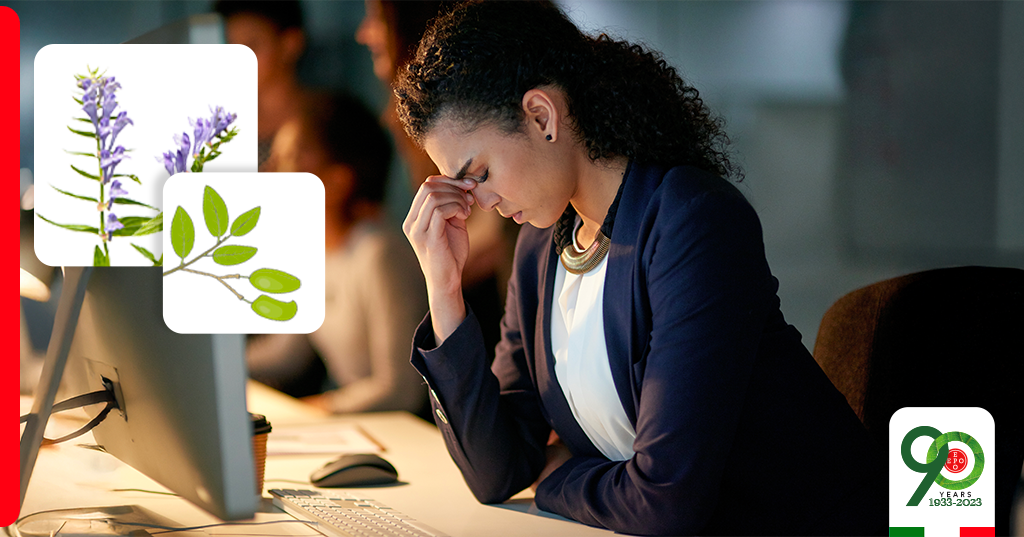
Job burnout: a growing problem
One out of 3 Italian employees (31.8%) suffers from some form of stress or job burn-out, complaining of feelings of exhaustion, detachment or negativity: this is what the 8th Rapporto Censis-Eudaimon sul welfare aziendale says, underlining how this state of strong emotional, physical and mental distress affects 47.7% of young people, 28.2% of adults, and 23.0% of employees between Gen X and Baby Boomers who are still active. A multifactorial condition that can harm personal life, given that 36.1% of those interviewed said they can’t leave work problems at the office, the so-called "osmosis" between work and private life.
Well-being as a priority and symptoms of job burnout
Alarming numbers, even more so if we consider that with the Covid 19 pandemic, according to the World Health Organization (WHO), anxiety, stress and depressive conditions have increased by 25%, and that the pandemia represented a watershed in the perception of well-being generated by work: today, again according to the Censis-Eudaimon Report, as many as 83.4% of Italian employees consider it a priority that work also contributes to people's physical, mental and psychological well-being.
Moreover, 63.5% of employees are also convinced that the company in which they work could do a lot to improve their well-being; this is a further spur to the general orientation of many companies towards welfare, about which, however, workers would like to be better informed, if a large percentage (41.8%) would like the introduction of a specific consultant to whom they can turn for suggestions, information on health, assistance to non-self-sufficient family members and social protection.
According to the World Health Organization (WHO), job burnout is not classified as a pathology, but rather as a syndrome, i.e. a collection of symptoms related to the physical, emotional and mental sphere caused by long-term stress and feeling under constant pressure; chronic fatigue, lack of energy, demotivation, frustration, irritability, unstable mood, difficulty concentrating, reliant to drugs and alcohol to cope with the situation, are certainly alarm bells, which must be taken into due consideration, because job burnout is a risk factor for anxiety, insomnia and depression.
The mechanism of stress
Job burnout isn’t the same as stress; the latter is a short-term condition, while burnout is progressive and tends to worsen over time, if untreated.
Stress is a physiological mechanism that triggers nonspecific adaptive actions. The sympathetic nervous system stimulates the adrenal glands to produce catecholamines, which in turn induce an increase in heart rate, blood pressure, and respiratory rate, to allow the so-called "fight or flight” reaction.
The hypothalamus is also activated, stimulating the pituitary gland to release ACTH, a hormone that in turn induces the adrenal cortex to produce cortisol, whose main function is to act on various systems to save energy destined for “fight or flight”, depressing high energy-consuming systems, such as, for example, the immune system.
When the stressful situation disappears, the body should stop these responses and return to homeostasis. However, in case of chronic and persistent stress, they can have negative repercussions on the nervous, endocrine, and immune systems, which, as we have seen, are closely interconnected.
What can be done to reduce chronic stress? In addition to support policies through corporate welfare and the commitment to create more welcoming and rewarding work environments, much depends on individual choices: balanced and healthy lifestyles can certainly help, as can the use of botanicals.
The help from medicinal plants
For centuries, man has turned to nature to regain psycho-physical balance: plants such as passionflower, lavender, lemon balm, chamomile, or Californian poppy have a very long traditional use to promote relaxation and sleep, restore normal mood and mental well-being.
Adaptogenic plants - such as ginseng, ashwagandha, or maca - have also been known for centuries to help the body adapt and react to conditions of psychophysical stress.
The anti-stress properties of Scutellaria lateriflora
A lesser-known natural remedy is Scutellaria lateriflora, a perennial herb native to North America, traditionally used to promote relaxation and sleep.
A study published in January 2024 in the scientific journal Molecules helped lay the scientific ground for this use, demonstrating how a chemically characterized extract of Scutellaria lateriflora L. (BlueCALM®) has a significant inhibitory action on cortisol release in an in vitro model.
In light of these results, BlueCalm® was tested as a nutraceutical ingredient in a recently published clinical study, whose primary objective was to evaluate the efficacy of the dietary supplement in maintaining a correct sleep-wake balance (sleep quality) and, as a secondary objective, the effectiveness of sleep, through the compilation of validated, internationally recognized questionnaires, and a sleep diary. Results demonstrated a statistically significant improvement from baseline in all treated volunteers.
To learn more about BlueCALM®, our dry extract standardized to contain 10% baicalin, from an Italian supply chain (Lombardy and Trentino), identified by DNA barcoding to avoid adulteration from morphologically similar but hepatotoxic species of the genus Teucrium, download our brochure.
And those of Griffonia simplicifolia (DC.) Baill.
Griffonia simplicifolia (DC.) Baill. can also support psychophysical balance. This evergreen and climbing shrub, native to the wetlands of West Africa, is rich in 5-hydroxytryptophan (5-HTP), the direct precursor of serotonin, a cortisol antagonist that acts on the central nervous system, regulating mood, sleep, and appetite.
For these properties, Western phytotherapy has been interested in Griffonia simplicifolia (DC.) Baill. since the 1970s of the twentieth century, and again in 2011, an in vivo study published in Phytomedicine demonstrated the anxiolytic effect of Griffonia seed extract on rats, suggesting a potential benefit also in humans for the treatment of anxiety.
Learn more about our high-quality aqueous extract made from Griffonia simplicifolia seeds (DC.) Baill., standardized ≥ 20% 5-HTP, 100% Made in EPO, identified by DNA barcoding, click here.